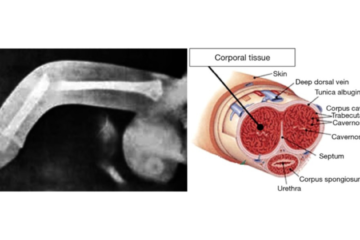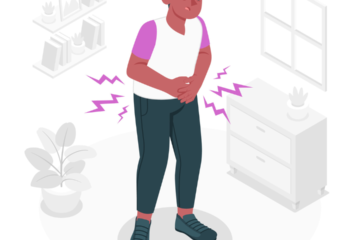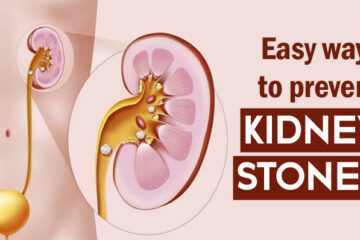
Women’s health encompasses a myriad of intricacies, and among the lesser-discussed topics are urological issues that affect a significant portion of the female population. While urological problems are often associated with men, it’s crucial to shed light on the challenges that women face with their urinary and reproductive systems. In this comprehensive blog, we will unravel four common urological issues that impact women and explore effective treatment strategies. By understanding these concerns and their respective solutions, women can navigate their health with knowledge and empowerment, breaking the silence surrounding these important aspects of well-being. Let’s embark on a journey to demystify women’s urological health and provide insights into managing these issues for a healthier, happier life.
- Urinary Tract Infections (UTIs) – Causes and Treatments
Urinary Tract Infections (UTIs) are a prevalent urological issue that affects millions of women worldwide. These infections occur when bacteria enter the urinary tract, leading to an inflammation of the bladder (cystitis) or, in more severe cases, the kidneys (pyelonephritis). Understanding the causes and appropriate treatments for UTIs is essential for effectively managing and preventing these uncomfortable and potentially recurrent infections.
Causes of UTIs
- Bacterial Entry
- The most common cause of UTIs is the entry of bacteria into the urethra, the tube through which urine exits the body. Escherichia coli (E. coli) is the predominant bacterium responsible for UTIs, often originating from the gastrointestinal tract.
- Female Anatomy
- Women are more susceptible to UTIs due to their shorter urethra, which allows bacteria easier access to the bladder. Additionally, factors like sexual activity can contribute to bacterial introduction.
- Urinary Tract Obstructions
- Conditions that obstruct the normal flow of urine, such as kidney stones or an enlarged prostate, can create stagnant urine, providing an environment conducive to bacterial growth.
- Compromised Immune System
- Individuals with weakened immune systems, either due to medical conditions or certain medications, are at a higher risk of developing UTIs.
Symptoms of UTIs
- Frequent urge to urinate
- Pain or burning sensation during urination
- Cloudy or strong-smelling urine
- Lower abdominal discomfort or pain
- Fatigue and general malaise
Treatments for UTIs
- Antibiotics
- The primary and most common treatment for UTIs involves a course of antibiotics. The choice of antibiotic and duration of treatment depends on the severity of the infection and the specific bacteria causing it. It is crucial to complete the entire prescribed course to ensure complete eradication of the infection.
- Hydration
- Drinking plenty of water helps flush out bacteria from the urinary tract. Adequate hydration is often recommended as a supportive measure during and after antibiotic treatment.
- Urinary Analgesics
- Medications that alleviate pain and discomfort during urination, known as urinary analgesics, may be prescribed to ease symptoms.
- Avoiding Irritants
- Patients are often advised to avoid substances that can irritate the bladder, such as caffeine, alcohol, and spicy foods, during the infection.
Prevention Strategies
- Hygiene Practices
- Wiping from front to back after using the toilet helps prevent the introduction of bacteria into the urethra.
- Urinating After Intercourse
- Emptying the bladder shortly after sexual activity can help flush out any bacteria that may have entered the urethra.
- Cranberry Products
- Some studies suggest that the consumption of cranberry products may help prevent UTIs by interfering with the adhesion of bacteria to the urinary tract.
- Regular Urinary Tract Health Checks
- For individuals prone to recurrent UTIs, healthcare providers may recommend regular check-ups and preventive measures tailored to their specific situation.
While UTIs can be uncomfortable and disruptive, timely medical intervention and adherence to prescribed treatments can effectively address these infections. Additionally, adopting preventive strategies can significantly reduce the risk of recurrent UTIs, promoting overall urological health in women. If symptoms persist or worsen, consulting a healthcare professional is crucial for accurate diagnosis and personalized treatment.
- Overactive Bladder (OAB) – Understanding and Managing Symptoms
Overactive Bladder (OAB) is a urinary condition characterized by a sudden and involuntary contraction of the bladder muscles, leading to a frequent and urgent need to urinate. This condition can significantly impact a person’s quality of life, causing disruptions in daily activities and potentially leading to embarrassment and social withdrawal. Understanding the symptoms and effective management strategies is crucial for individuals dealing with OAB.
Symptoms of Overactive Bladder (OAB)
- Urge Incontinence
- The hallmark symptom of OAB is an intense and sudden urge to urinate, often resulting in involuntary urine leakage (urge incontinence).
- Frequency
- Individuals with OAB may need to urinate more frequently than normal, even during the night (nocturia), disrupting regular sleep patterns.
- Urgency
- The sense of urgency to urinate can be overwhelming and may not always align with the actual need to empty the bladder.
- Nocturia
- Frequent urination during the night can disturb sleep and lead to fatigue and daytime sleepiness.
Causes and Risk Factors
- Age
- OAB becomes more common with age, especially in individuals over the age of 40.
- Neurological Conditions
- Diseases or conditions affecting the nervous system, such as multiple sclerosis or Parkinson’s disease, can contribute to OAB.
- Bladder Conditions
- Bladder abnormalities or inflammation can lead to overactivity.
- Hormonal Changes
- Changes in hormonal levels, particularly during menopause, can impact bladder function.
- Urinary Tract Infections
- Infections can irritate the bladder and contribute to OAB symptoms.
Management and Treatment
- Behavioral Therapies
- Behavioral interventions, such as bladder training, involve scheduled and gradual increases in the intervals between bathroom visits to help improve bladder control.
- Pelvic Floor Exercises
- Kegel exercises, which involve contracting and relaxing the pelvic floor muscles, can strengthen the muscles that control urination.
- Lifestyle Modifications
- Avoiding bladder irritants like caffeine, alcohol, and spicy foods can help alleviate OAB symptoms.
- Fluid Management
- Strategically managing fluid intake, including avoiding excessive consumption before bedtime, can reduce nocturia.
- Medications
- Various medications, such as anticholinergic or beta-3 agonist drugs, may be prescribed to relax the bladder muscles and alleviate OAB symptoms.
- Botox Injections
- In some cases, Botox injections into the bladder muscle may be recommended to reduce muscle overactivity.
Seeking Professional Help
- Individuals experiencing persistent or severe OAB symptoms should seek consultation with a healthcare professional, typically a urologist or a healthcare provider specializing in urology.
- Pelvic Organ Prolapse (POP) – Causes and Surgical Options
Pelvic Organ Prolapse (POP) is a condition in which the pelvic organs, such as the bladder, uterus, or rectum, descend into the vaginal canal due to weakened pelvic floor muscles and supporting tissues. This can result in a variety of symptoms and discomfort for affected individuals. Understanding the causes and available surgical options for Pelvic Organ Prolapse is crucial for informed decision-making and effective management of this condition.
Causes of Pelvic Organ Prolapse
- Childbirth
- The most common cause of POP is vaginal childbirth, especially if it involves prolonged labour or multiple deliveries. The stretching and weakening of pelvic floor muscles during childbirth can contribute to organ descent.
- Ageing
- The natural ageing process can lead to a gradual loss of elasticity in the connective tissues and muscles that support pelvic organs, making them more susceptible to prolapse.
- Hormonal Changes
- Reduction in estrogen levels during menopause can contribute to a decrease in collagen production, affecting the strength and support of pelvic tissues.
- Chronic Straining
- Conditions that involve chronic straining, such as constipation, chronic coughing, or heavy lifting, can increase intra-abdominal pressure, contributing to POP.
- Genetic Factors
- Some individuals may have a genetic predisposition to weaker connective tissues, making them more prone to developing POP.
Types of Pelvic Organ Prolapse
- Cystocele
- Descent of the bladder into the vaginal canal.
- Rectocele
- Descent of the rectum into the vaginal canal.
- Uterine Prolapse
- Descent of the uterus into the vaginal canal.
- Enterocele
- Herniation of the small intestine into the vaginal canal.
Symptoms of Pelvic Organ Prolapse
- A feeling of pressure or fullness in the pelvic area.
- Visible bulging or protrusion from the vaginal opening.
- Discomfort or pain during intercourse.
- Urinary symptoms, such as incontinence or difficulty emptying the bladder.
- Bowel symptoms, including constipation or difficulty with bowel movements.
Surgical Options for Pelvic Organ Prolapse
- Vaginal Mesh Procedures
- Synthetic mesh can be used to provide additional support to weakened pelvic tissues. However, the use of vaginal mesh has been associated with complications, and its use is now more restricted due to safety concerns.
- Colporrhaphy
- This surgical procedure involves repairing and reinforcing the weakened vaginal walls and pelvic floor tissues. It is often used to address anterior and posterior prolapses (cystocele and rectocele).
- Hysterectomy
- In cases of uterine prolapse, where the uterus has descended into the vaginal canal, a hysterectomy may be recommended. This involves the removal of the uterus to alleviate prolapse symptoms.
- Sacrocolpopexy
- This procedure involves using mesh or synthetic material to attach the top of the vagina to the sacrum (the bone at the base of the spine), providing long-term support.
- Uterine Suspension
- In cases where preserving the uterus is desired, uterine suspension techniques may be employed to lift and secure the uterus in its normal position.
Postoperative Considerations
- Recovery periods vary based on the type of surgery performed.
- Physical therapy and pelvic floor exercises may be recommended to strengthen the pelvic floor muscles postoperatively.
- Regular follow-up appointments are essential to monitor recovery and address any complications.
- Interstitial Cystitis/Bladder Pain Syndrome (IC/BPS) – Managing Chronic Bladder Pain
Interstitial Cystitis/Bladder Pain Syndrome (IC/BPS) is a chronic condition characterized by recurring pain or discomfort in the bladder and pelvic region. The exact cause of IC/BPS is not fully understood, making diagnosis and management challenging. This condition can significantly impact a person’s quality of life, and effective management involves a combination of lifestyle modifications, medications, and other therapeutic approaches.
Symptoms of IC/BPS
- Chronic Pelvic Pain
- Persistent discomfort or pain in the pelvic region, often described as a pressure or burning sensation.
- Frequent Urges to Urinate
- Individuals with IC/BPS may experience an urgent need to urinate more often than usual, including during the night.
- Painful Bladder Filling
- Pain or discomfort may worsen as the bladder fills with urine.
- Painful Intercourse
- Many individuals with IC/BPS experience pain during sexual intercourse.
- Symptoms Flare-ups
- The severity of symptoms can vary, with periods of symptom exacerbation (flare-ups) alternating with periods of relative relief.
Causes and Risk Factors
- Bladder Lining Defects
- Damage or defects in the protective lining of the bladder may contribute to inflammation and pain.
- Autoimmune Factors
- Some researchers believe that IC/BPS may involve an autoimmune response that targets the bladder tissues.
- Neurological Factors
- Abnormalities in the nervous system may play a role in the development of IC/BPS.
- Genetic Predisposition
- There may be a genetic component, as IC/BPS is sometimes found to run in families.
Management Strategies
- Dietary Modifications
- Identifying and avoiding potential bladder irritants is a key aspect of managing IC/BPS. Common irritants include caffeine, spicy foods, acidic foods, and artificial sweeteners.
- Bladder Training
- Scheduled voiding and gradually increasing the time between bathroom visits can help improve bladder control.
- Physical Therapy
- Pelvic floor physical therapy aims to strengthen and relax the pelvic floor muscles, alleviating tension and discomfort.
- Medications
- Depending on symptoms, healthcare providers may prescribe medications such as oral medications, bladder instillations, or muscle relaxants to manage pain and inflammation.
- Bladder Instillations
- A solution containing medications to soothe the bladder lining is instilled directly into the bladder through a catheter.
- Nerve Stimulation
- Sacral nerve stimulation involves the use of an implanted device to modulate nerve signals that affect bladder function.
Psychological Support
- Counselling and Support Groups
- Chronic conditions like IC/BPS can impact mental health. Counselling and participation in support groups can provide emotional support and coping strategies.
- Stress Management
- Stress can exacerbate symptoms. Learning and practising stress management techniques, such as mindfulness and relaxation exercises, can be beneficial.
Surgical Options
- Hunner’s Lesion Treatment
- In cases where Hunner’s lesions (inflammatory patches) are present, surgical interventions like laser therapy or fulguration may be considered.
- Bladder Augmentation
- In severe cases, bladder augmentation surgery involves increasing the bladder’s capacity to reduce symptoms.
Conclusion
Empowerment lies in knowledge, and by shedding light on these often-overlooked aspects of health, we aim to encourage women to take an active role in their well-being. From preventive measures and lifestyle adjustments to medical interventions, a spectrum of options exists to address these urological concerns.
As we conclude, it’s crucial to emphasize the significance of seeking professional advice. If you or someone you know experiences persistent symptoms related to these urological issues, consulting with a healthcare professional is paramount. Tailored treatment plans, personalized to individual needs, can pave the way for improved urological health, allowing women to lead fuller, more comfortable lives.
Remember, your health is a priority, and being informed is the first step toward proactive care. Let’s break the silence, empower women with knowledge, and foster a culture of openness and support when it comes to women’s urological health.
Dr. Sumit Sharma is an experienced urologist, andrologist, and kidney transplant surgeon with over 20 years of clinical experience. He is the founder of the Department of Urology at multiple hospitals in Gurgaon and has established successful kidney transplant programs across the city.
With a commitment to the highest standards, Dr. Sumit Sharma ensures personalised, professional treatment, making your well-being the primary focus. Choose Dr. Sumit Sharma for outstanding Urological care in Gurgaon.



